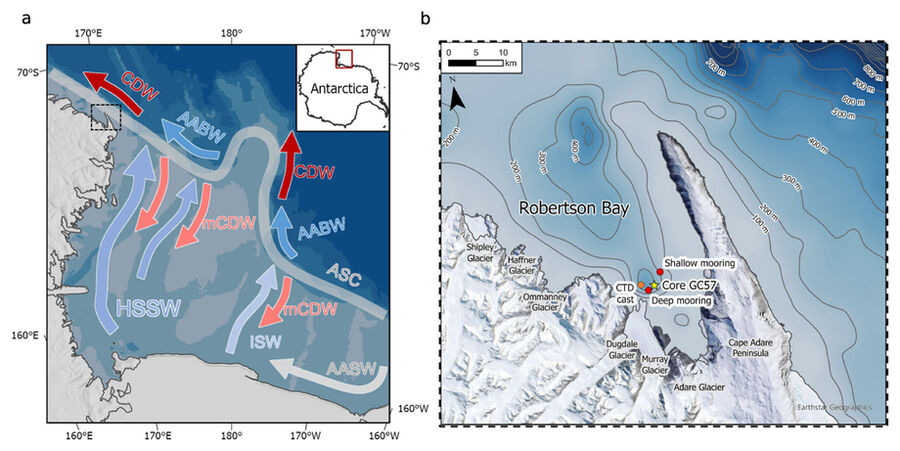
© Quaternary Science ReviewsHere, we present a new reconstruction of primary productivity, glacial conditions, water mass circulation, and the seasonal duration of sea ice from a marine sediment core collected from Robertson Bay, a 40 km long north-south trending embayment located west of Cape Adare in the westernmost region of the Ross Sea.
Between ~8000 and 3500 years before present the Antarctic ice sheet experienced several millennia of retreat and the sea ice extent surrounding the continent decreased throughout the Middle Holocene. For the next few millennia after that, or from about 3500 to 1500 years ago, the ice sheet and sea ice extent advanced to near modern levels.
"The East and West Antarctic ice sheets underwent rapid periods of retreat in the Ross Embayment, the continent's largest ice drainage basin, between 8 and 3.5 calkyr BP. Recent work shows that retreat was followed by a period of readvance and the ice sheets reached their modern configurations during the late Holocene."
During the Medieval Warm Period, or from approximately 1500 to 700 years before present, variations in F. curta diatom, a proxy for sea ice extent, indicate Antarctic sea ice retreated again to its much lower (<40%) Middle Holocene levels.
"...during the period between 1.5 and 0.7 calkyr BP...lower F. curta abundance in Robertson Bay (<40%) is characteristic of a reduction in spring sea ice concentration and a longer summer open water season."
Then, after the Medieval Warm Period ended, Antarctica's Little Ice Age (LIA) cooling began. The ice sheet grew and sea ice advanced to the highest levels of the last 7000 years (~60%).
The relative abundance of F. curta over the last 700 years indicate these icy LIA conditions have persisted to the present day. Sea ice has been increasing (with no declining long-term trend) since the late 1970s, which is consistent with significant (>1°C) cooling trends in this region during recent decades.
"...an increase in the seasonal duration of sea ice between 0.7 calkyr BP [~700 years ago] and the present [is] consistent with ice core temperature reconstructions of cooling atmospheric temperatures."
Source link

